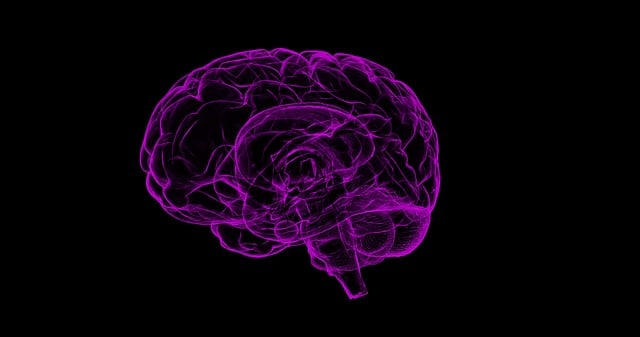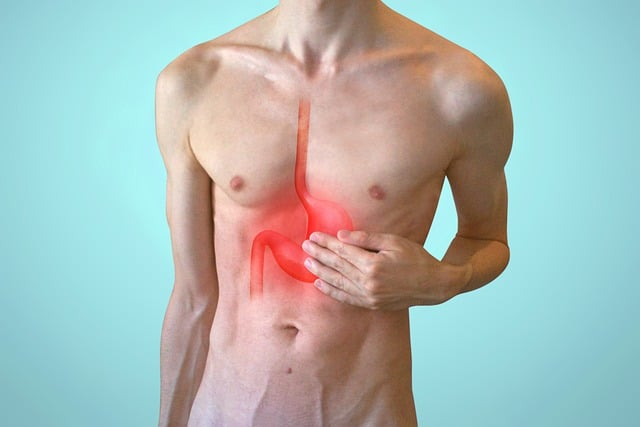Dr. Matthew Olesiak continues to make a significant impact in the medical field through his work at SANESolution and his dedication to evidence-based practices.
Swallowing Disorders in Adults Guide
Swallowing disorders, or Dysphagia, are conditions where moving food or liquid from your mouth to your stomach requires more time and effort. It can be painful and, in some cases, even impossible to swallow. While occasional swallowing difficulties may occur due to eating too fast or not chewing food properly, dysphagia is a more severe and persistent issue that requires medical attention.
This Throat Cleaner throat diseases blog post jumps into the different swallowing disorders that can affect adults. If you want to read more about GERD or voice hoarseness, we have those articles too!
We’ll cover the causes and symptoms so that you can identify the condition and take proactive measures to alleviate or reduce the symptoms.

- New Report Says Your Brain Could Be the Key to Reducing Phlegm Over 50
- Doctor's "Leave The Throat Phlegm Behind" Tutorial Goes Viral With People Over 50
- Can You Relieve Throat Phlegm and Coughing In 60 Seconds A Day? This Doctor Says Yes
- How To Banish Phlegm When 50+ (Do This Every Day)
Short Summary
- Swallowing disorders have varied causes and require tailored medical treatment to improve symptoms.
- Medical treatments can include medications to control acid reflux or treat bacterial strep throat.
- A correct diagnosis is essential to determining an effective treatment plan, including assistance from a speech and language therapist, medications, and, in serious cases, surgery.

The Fundamentals of Swallowing
Swallowing may seem simple, but it involves many intricate movements. Various muscles and nerves collaborate to help food and drinks travel from our mouths to our stomachs.
There are three distinct phases of swallowing, and complications can arise during any of them. These phases are:
Oral (Mouth) Phase
This phase involves the teeth and tongue and includes actions needed to prepare food for swallowing, including chewing, sucking, and maneuvering food or liquid into the throat.
The food mixes with saliva as you chew, which helps soften and predigest the food. This ensures your body absorbs the maximum amount of nutrients from what you eat.
Pharyngeal (Throat) Phase
This phase involves swallowing and squeezing food or liquids down the throat. This process is more intricate than it sounds.
When you swallow, a tiny muscular flap known as the epiglottis automatically shuts to prevent food and liquid from entering the wrong pipe, which is your windpipe or trachea. Another flap called the uvula also prevents liquid from moving upward toward your nasal cavity.

Esophageal (Esophagus) Phase
During this phase, the esophagus (a tube connecting the throat to the stomach) opens and closes to allow food and liquid to pass through.
At the upper opening of the esophagus, there is a ring-shaped muscle known as the upper esophageal sphincter. This muscle detects the presence of food or liquid and relaxes to allow it to enter the esophagus. When there is no food or drink, the sphincter remains closed.
Once in the esophagus, muscular contractions (peristalsis) push the food toward the stomach. The food then passes through the diaphragm and reaches the lower esophagus.
At the lower opening of the esophagus, there is another ring-shaped muscle called the lower esophageal sphincter (LES). Like the upper esophageal sphincter, it detects the presence of food or liquid and opens it to allow it to pass through to the stomach. When no food or liquid exists, the LES remains closed to prevent stomach acid and digestive juices from entering the esophagus.

Symptoms of Swallowing Disorders in Adults
As mentioned above, occasional difficulty swallowing is common and typically nothing to worry about. But if you regularly experience one or more of the signs and symptoms below, you may have a swallowing disorder.
- Gagging (or coughing) while swallowing food or liquid
- Being unable to swallow
- Painful swallowing
- Frequent throat clearing
- Hoarseness
- The feeling of something stuck in your chest or behind your breastbone
- Frequent drooling of saliva
- Food getting stuck in your mouth
- Frequent heartburn
- Swallowed food and stomach acid backing up into the throat. (This can be a sign of gastroesophageal reflux disease GERD)
- Swallowed food coming back up into the mouth (regurgitation)
- Unintentional weight loss
- Having trouble breathing after meals
- Nasal regurgitation when swallowed food or liquid back up into the nose.

Classifications of Swallowing Disorders in Adults
Various disorders, diseases, and conditions can lead to difficulties in swallowing. Doctors usually categorize swallowing problems into three types based on their location:
1. Oral dysphagia: This swallowing problem originates in the mouth, often in the tongue. It can be caused by tongue weakness after a stroke, difficulty chewing food, or neuromuscular issues.
2. Oropharyngeal dysphagia: This type of problem is located in the throat and may result from neurological or muscular issues.
3. Esophageal dysphagia: This swallowing problem occurs in the esophagus. It can be caused by a blockage in or compression of the esophageal tube, a muscular disorder, or pouches in the esophagus that prevent food from moving down the esophagus.
Causes of Swallowing Problems
Several conditions can cause a swallowing disorder, including the following:
Infections
Mouth, throat, and sinus infections often cause a sore throat, making it difficult to swallow. Examples include:
- Influenza
- The common cold
- Tonsillitis, a swelling of the tonsils in the back of the throat that can be caused by viruses or bacteria
- Scarlet fever, a rare but serious bacterial infection that typically affects children

Digestive Issues
Acid reflux, a digestive condition in which the liquid from the stomach flows back into the esophagus, the tube that connects the mouth and stomach. It can be triggered by diet, obesity, and other lifestyle factors.
Gastroesophageal Disease (GERD), a more severe chronic form of acid reflux that occurs frequently and can damage the esophagus.
Silent reflux, also known as laryngopharyngeal reflux (LPR), occurs when stomach acid flows back into the esophagus and irritates the throat. Unlike acid reflux and GERD, silent reflux usually doesn’t result in heartburn or other symptoms. However, it can damage the throat and vocal cords.
Neurological Disorders
Neurological disorders affect the central nervous system, which includes the brain, brain cells (neurons), and the spine. Examples of neurological conditions that can make swallowing difficult include:
- Alzheimer’s disease
- Parkinson’s disease
- Multiple sclerosis
- Amyotrophic Lateral Sclerosis (ALS, or Lou Gehrig’s disease)

Brain Damage
Brain damage often significantly affects the ability to chew food and swallow. Examples include:
- Stroke
- Traumatic Brain Injury (TMI)
- Meningitis
- Encephalitis
- Lack of oxygen in the brain due to asphyxia, cardiac arrest, etc.
Muscular Disorders
Muscular disorders can affect the throat muscles, making swallowing difficult or impossible. Examples include:
- Myasthenia Gravis
- Muscular dystrophy
- Autoimmune Myositis
Esophageal Disorders
Several disorders of the esophagus can interfere with swallowing. Examples include:
- Esophageal cancerous tumor
- Swollen thyroid gland
- Esophageal stricture (narrowing of the esophagus)
- Schatzki rings or webs, which are pieces of tissue that grow inside the esophagus, causing the tube to narrow

Esophageal Motility Disorders
An esophageal motility disorder is a dysfunction of the esophagus muscles. Examples include:
- Achalasia, a medical condition that causes reduced rhythmic contractions in the esophagus. The lower esophageal muscle also does not relax properly, making it difficult for food to pass into the stomach.
- Esophageal spasm, a condition that affects the muscular contractions of the esophagus. This disorder disrupts the regular propulsive contractions that move food through the esophagus. Instead, nonpropulsive contractions or hyperdynamia periodically occur, preventing the effective movement of food through the esophagus.
- Systemic sclerosis, a complex and challenging autoimmune connective tissue disease that affects multiple systems in the body. Patients with this condition experience degenerative changes and scarring in the skin, joints, blood vessels, and internal organs, including the esophagus. As a result, they may suffer from heartburn, difficulty swallowing, and shortness of breath, which can significantly impact their quality of life.

Complications of Swallowing Problems
Difficulty swallowing can cause several serious complications, including:
- Aspiration pneumonia. This condition occurs when food or drink accidentally enters the airway during swallowing, introducing bacteria into the lungs.
- Choking. When food gets stuck in the throat, it can lead to choking. In severe cases, if the airway is completely blocked, it’s a medical emergency with no time to call an ambulance. Consequently, it can result in death if nobody nearby knows how to perform a Heimlich maneuver.
- Malnutrition or dehydration. Having dysphagia can make it challenging to consume sufficient nutrients and liquids.

Diagnosing Swallowing Disorders in Adults
To diagnose swallowing issues, your healthcare provider will likely ask you about your medical history, manually examine your mouth, throat, and neck, and ask questions about your swallowing problems, such as whether you can eat solid foods.
They will then typically order several diagnostic tests, which may include:
- Modified barium swallow. As part of this test, a speech therapist will offer you a variety of foods and liquids to chew and swallow. These foods will be coated with a barium solution with a minty taste and a pasty consistency. The barium helps create clear X-ray images of your mouth, throat, and esophagus during swallowing. The speech therapist will instruct you when to chew and swallow while the radiologist captures the X-ray images.
- Flexible laryngoscopy. To conduct this test, an ENT (ear, nose, and throat) specialist inserts a tiny scope into your nose to examine your throat and vocal cords.
- Esophagram. During this test, you must drink barium while the radiologist takes pictures of your esophagus.
- Esophagoduodenoscopy (EGD) or upper endoscopy: This test, performed by a gastroenterologist (GI), involves placing a scope down your throat and into your esophagus and stomach to look for any narrowing, tumors, or other conditions.
- Fiberoptic endoscopic evaluation of swallowing (FEES). In this test, a speech therapist passes a tiny camera through your nose and fees you dyed liquids and foods to assess your swallowing ability. During this test, your health care provider will also observe if any food enters your airway, signifying aspiration.

Treating Swallowing Problems
Your healthcare provider may offer various treatment options if you have trouble swallowing. Keep in mind that treatment depends upon the cause.
If you’re experiencing dysphagia, medical treatment may be necessary. Your doctor may prescribe medications for reflux or suggest dietary changes, like eating softer foods. In the case of strep throat, antibiotics may be prescribed.
In some cases, if you have difficulty swallowing, alternative methods of getting nutrition may be required, such as a feeding tube through your nose or stomach. Your doctor will work with you to determine the best course of action if tube feeding is necessary. In severe cases, surgery may be required on your neck or stomach to repair the underlying issue.
Rehabilitation for Swallowing Disorders
Rehabilitation can be useful for certain individuals. If you are experiencing difficulty with swallowing, a speech-language pathologist (SLP) can provide swallowing therapy and guide you through exercises that make swallowing easier. They may also suggest some changes to ensure safe swallowing.
These changes could include:
- swallowing exercises to help you use your muscles to chew and swallow
- instructions on how to sit or hold your head when you eat to help prevent aspiration
- strategies to help you swallow better and more safely
- consuming softer foods or thicker drinks to make swallowing easier
Summary
You may have a swallowing disorder if you experience difficulty or pain when swallowing. Some individuals cannot swallow, while others struggle with liquids, foods, or saliva. This can make eating challenging, and consuming enough calories and fluids to keep your body nourished may be difficult.
Underlying medical conditions, such as issues with the esophagus, brain and nervous system disorders, traumatic brain injuries, or cancerous tumors in the neck, brain, or esophagus, often cause swallowing disorders.
Treatment options vary depending on the individual’s needs. Some people may benefit from medication, while others may require neck surgery. A speech-language pathologist can provide helpful swallowing treatments, and you may find it beneficial to adjust your diet or position your head and neck in a certain way while eating. In severe cases, tube feeding may be necessary.
Frequently Asked Questions
What are the common symptoms of swallowing disorders?
Symptoms of swallowing disorders vary depending on the cause. Generally, symptoms can include frequent throat clearing, coughing during or immediately after swallowing food, the sensation of food stuck in your throat or chest, choking or gagging when eating food, pain when swallowing, swallowed food or liquid returning to the mouth or throat (regurgitation), Chest pain or discomfort, hoarseness, and chronic sore throat.
What is the most common swallowing disorder?
Dysphagia is a medical condition characterized by frequent or continual difficulty in swallowing. This condition may manifest as difficulty swallowing particular foods or liquids or, in more severe cases, an inability to swallow altogether. Additional symptoms of dysphagia include coughing or choking while eating or drinking. We all have trouble swallowing at times. Occasional difficulty swallowing is not considered to be dysphagia.
What are the symptoms of a swallowing disorder?
Some signs of a swallowing disorder (dysphagia) are coughing or choking while eating or drinking, regurgitating food, possibly through the nose, sensing food stuck in your throat or chest, experiencing painful swallowing, or having a persistent sore throat.
Are swallowing problems a symptom of MS?
If you’re experiencing difficulty in swallowing, known as dysphagia, it could be a potential symptom of multiple sclerosis. Fortunately, there are speech-language pathologists and other medical professionals who can help manage the consequences of swallowing difficulties. MS can affect swallowing in different ways, including difficulty chewing food or controlling liquids in the mouth.

Dr. Matthew Olesiak continues to make a significant impact in the medical field through his work at SANESolution and his dedication to evidence-based practices.



